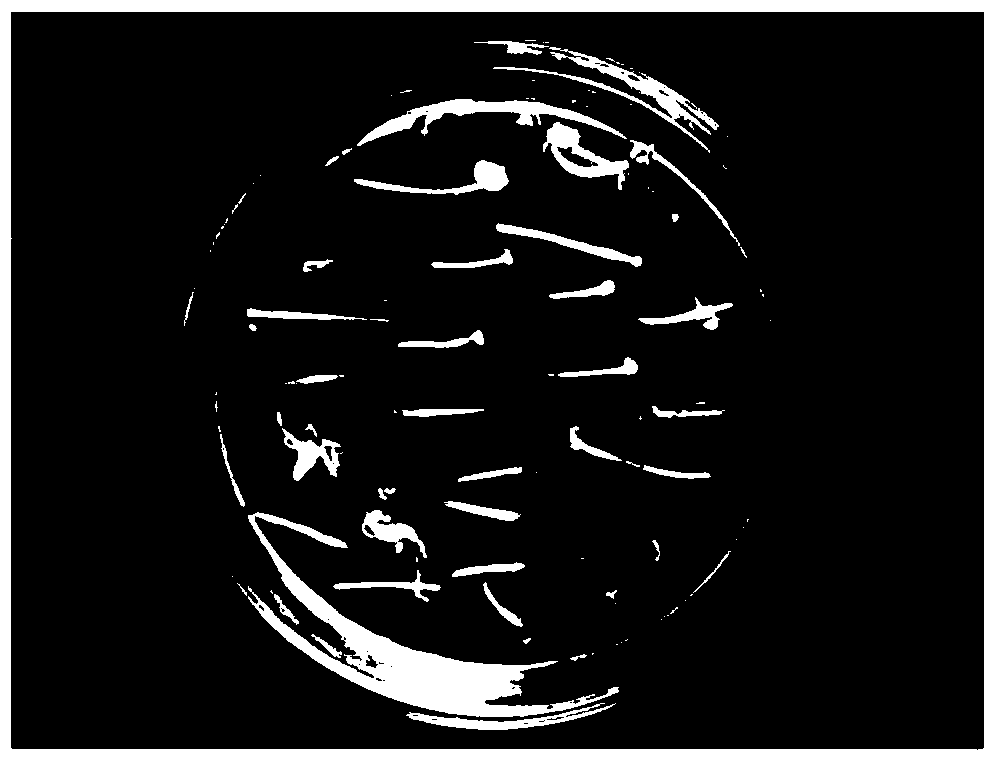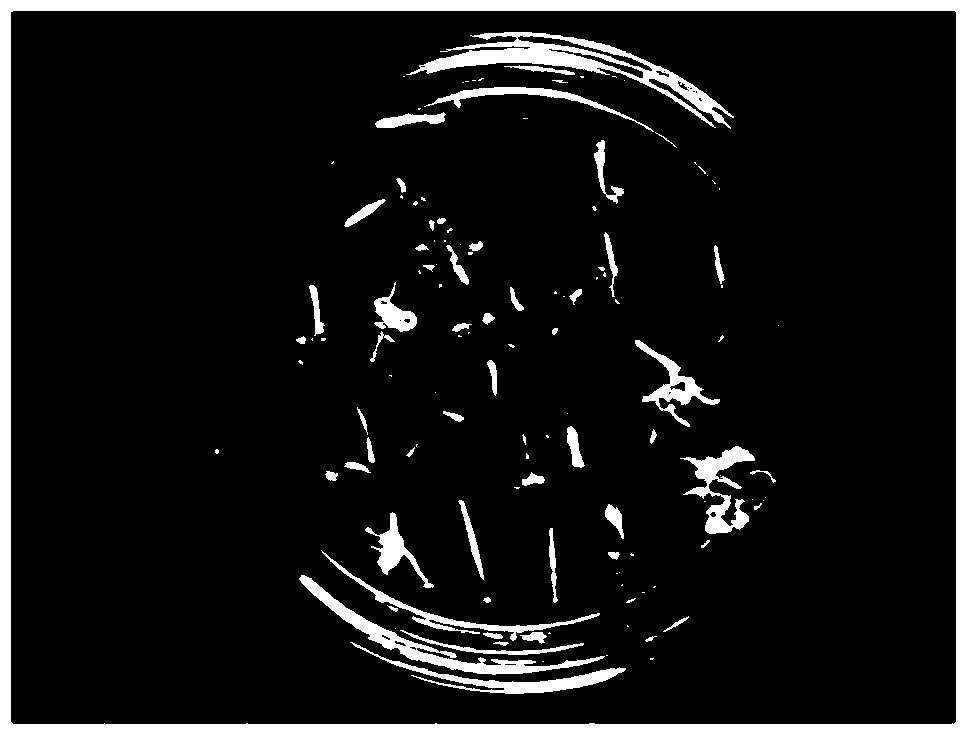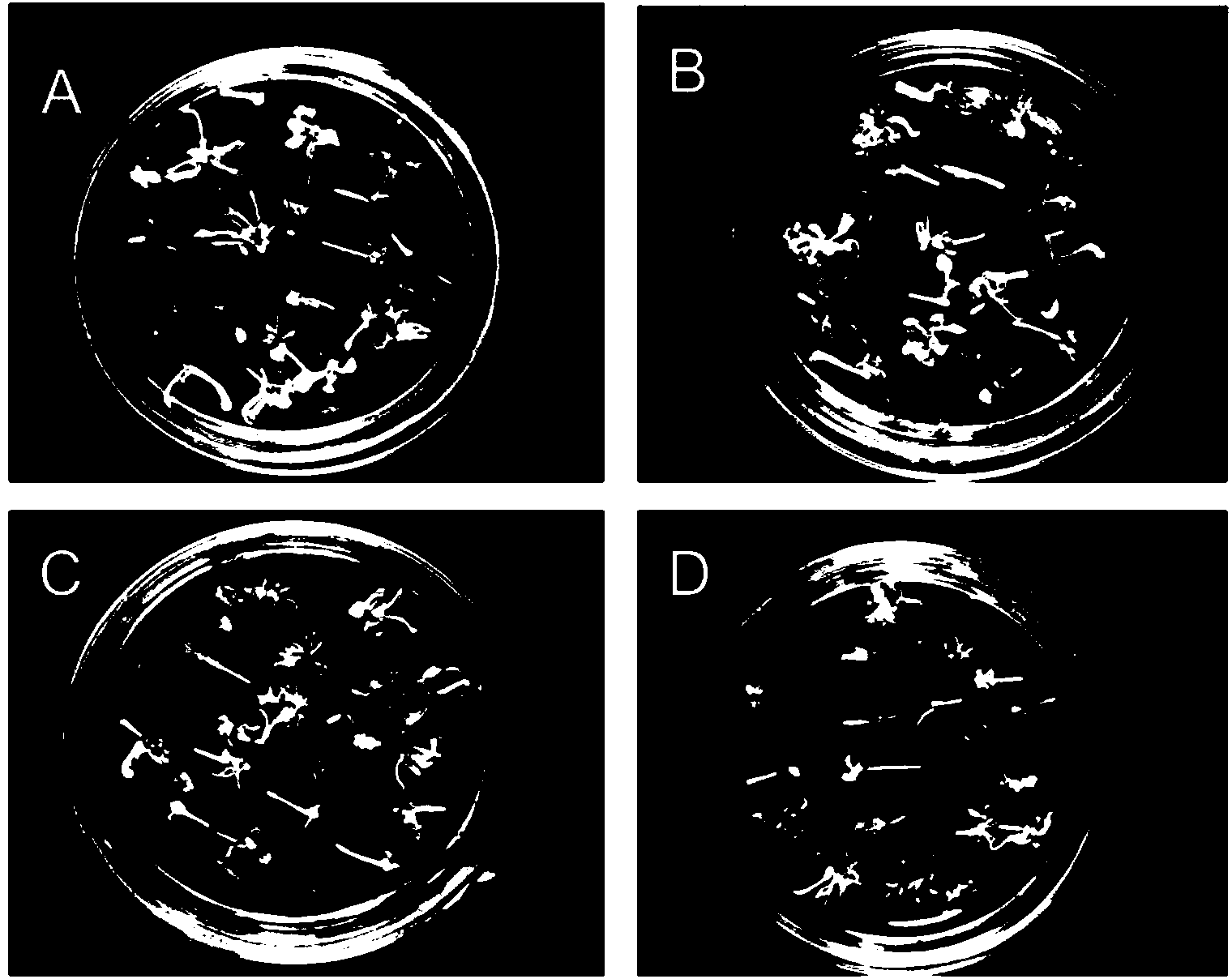Agrobacterium tumefaciens mediated cabbage type oilseed rape genetic transformation method
A genetic transformation method and a technology for Brassica napus, applied in the field of plant tissue culture and transgenic, can solve the problems of low differentiation rate of resistant seedlings, poor transformation efficiency of target genes, etc., and achieve the effects of high differentiation rate of resistant seedlings and promoting development.
- Summary
- Abstract
- Description
- Claims
- Application Information
AI Technical Summary
Problems solved by technology
Method used
Image
Examples
Embodiment 1
[0038] (1) Select an appropriate amount of "Zheda 619" rapeseed with full grains, wash it in 75% alcohol for 30 seconds, pour out the alcohol, add about 25mL of 5% sodium hypochlorite solution for disinfection for 15 minutes, and oscillate at the same time to make the disinfectant and rapeseed The seeds are in full contact, pour out the sodium hypochlorite solution, rinse with sterile water 4 to 5 times, and then evenly spread the sterilized seeds in the bottle containing the homogeneous medium.
[0039] (2) The solid medium is 1 / 2MS+18.0g / L sucrose+9.0g / L agar, the pH is 5.8. About 24 seeds are sown in each bottle of homologous medium, at 25-27°C, 16 hours of light, 8 hours of darkness, and a light intensity of 70 μmolm -2 the s -1 cultured under conditions.
[0040] (3) When the aseptic seedlings were cultivated for 8 days, the upper and lower ends of the hypocotyls of rapeseed seedlings were respectively cut on the ultra-clean workbench as explants, and inoculated onto pr...
PUM
 Login to View More
Login to View More Abstract
Description
Claims
Application Information
 Login to View More
Login to View More - R&D
- Intellectual Property
- Life Sciences
- Materials
- Tech Scout
- Unparalleled Data Quality
- Higher Quality Content
- 60% Fewer Hallucinations
Browse by: Latest US Patents, China's latest patents, Technical Efficacy Thesaurus, Application Domain, Technology Topic, Popular Technical Reports.
© 2025 PatSnap. All rights reserved.Legal|Privacy policy|Modern Slavery Act Transparency Statement|Sitemap|About US| Contact US: help@patsnap.com



